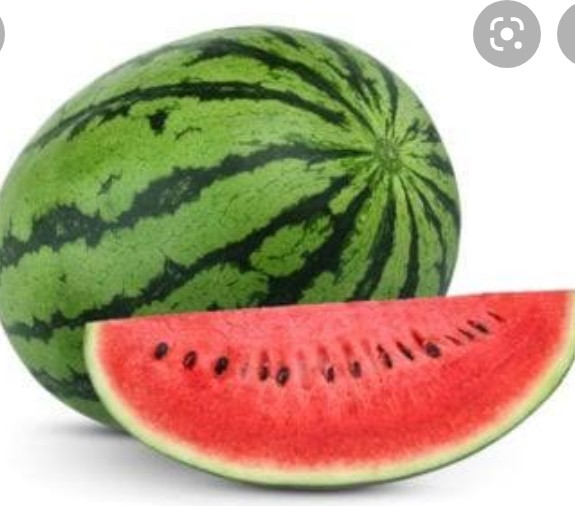
Water
— Written by Bethany Cadman and Jenna Fletcher(MNT)
Watermelon and diabetes
Benefits
Sugar content
Best ways to eat it
Other fruits for diabetes
Summary
Watermelon is a refreshing summer fruit that contains plenty of natural sugar.
While it is usually safe for a person with diabetes to include watermelon in their eating pattern, several factors determine the portion size and frequency of consumption.
People living with diabetes need to be careful about their food choices to maintain stable blood sugar levels and avoid complications.
A diet high in fruits and vegetables can support blood sugar management. However, since fruit also contains natural sugars and carbohydrates, working out a suitable serving size is important.
The American Diabetes Association (ADA) advises that there is no single distribution of macronutrients, which comprise fats, proteins, carbs, that works for everyone. Instead, healthcare teams and dieticians need to create individualized plans that consider a person’s goals and overall health.
This article examines the nutritional benefits of watermelon and discusses what people with diabetes may need to factor in before including this fruit in their eating patterns.
The glycemic index (GI) plays an important role in determining how quickly foods influence blood glucose levels.
The GI measures how quickly sugar from food enters the bloodstream — the faster this process, the more likely a person will experience a blood sugar spike.
The GI system allocates each food a score between 0 and 100. The higher the number, the greater the speed at which sugar enters the bloodstream.
Watermelon has a GI of around 72. Any food item with a GI of 70 or above has a high GI.
However, the Defeat Diabetes Foundation points out that due to the high percentage of water in the fruit, watermelon has a low glycemic load of 5 in a typical portion size of 120 grams (g). And though the organization supports eating fresh watermelon, it recommends avoiding watermelon juice due to its much higher glycemic load.
People with diabetes could pair watermelon with foods that are rich in healthy fats, fiber, and protein, such as nuts or seeds. This combination of nutrients can help a person feel full for longer and slow the absorption of sugar into the bloodstream.
Benefits
Watermelon contains many vitamins and minerals, including:
*vitamin A
*vitamins B1 and B6
*vitamin C
*potassium
*magnesium
*fiber
*iron
*calcium
*lycopene
*Vitamin A
Vitamin A helps preserve function in the heart, kidneys, and lungs. It also supports eye health. The Department of Agriculture advises that one wedge of watermelon weighing roughly 286 g provides 80 micrograms (mcg) of retinol activity equivalents (RAE), a measurement of vitamin A intake.
The Office of Dietary Supplements (ODS) states that males aged over 14 years should consume 900 mcg RAE and females should take in 700 mcg RAE of vitamin A. This means that one wedge of watermelon can contribute just over 10% of a person’s recommended daily vitamin A allowance.
Vitamin C
Vitamin C is an antioxidant that can promote a healthy immune system. A strong immune system can reduce the frequency of illnesses and infections and may help prevent certain types of cancer.
The ODS also advises that males should consume 105.2 milligrams (mg) per day and females should reach an intake of 83.6 mg daily. A wedge of watermelon provides 23.2 mg of vitamin C, meaning it provides around 30.7% of the recommended daily vitamin C intake for females and 25.6% of the intake for males.
Potassium
One wedge of watermelon provides around 320 mg of potassium, which can help manage blood pressure.
Amino acid
Finally, watermelon also contains a nonessential amino acid called citrulline, which a 2018 study suggests can help improve blood pressure and metabolic health.
How much sugar is in watermelon?
Watermelon contains 17.7 g of sugar in a medium-sized slice of about 286 g.
The amount of sugar a person consumes from watermelon will vary according to their portion size. For example, in a single cup, an individual would consume around 9.5 g of sugar.
Best ways to eat watermelon with type 2 diabetes
If a person adds watermelon or other fruit to their meal or snack, they should also balance it with nutritious fats and protein. The fat and protein help slow down the absorption of sugar into the bloodstream. This can be helpful for people living with type 2 diabetes who use their eating patterns to control their blood sugar levels.
Like other fruit, it is generally best to eat watermelon without added sugars and in its whole and minimally processed form. However, a person could add it as part of a fruit salad and consume a reasonable portion as part of a larger meal.
However, when eating watermelon, an individual should avoid pairing it with other high GI foods. Instead, they should include it with foods such as nuts, seeds, and other sources of nutritious fat and protein.
The Defeat Diabetes Foundation suggests avoiding watermelon juice because it may have a higher glycemic load than fresh, solid watermelon.
Alternatives to watermelon: Other fruits for diabetes
A person living with diabetes should aim to eat a balanced, nutritious diet consisting of a large proportion of fruits and vegetables.
Although fruits contain natural sugars, a person with diabetes should still monitor their intake to an extent. Often, pairing fruit intake with nutritious fats and proteins is enough to help prevent blood sugar spikes.
People should also be mindful of a fruit’s position on the GI scale and consider choosing fruits with lower levels of sugar and higher amounts of fiber. In general, they should also avoid sugary beverages, including fruit juices and smoothies.
Fruits that feature a lower GI score and that may have a reduced effect on blood sugar levels include:
*oranges
*berries
*grapefruit
*apples
*peaches
*kiwis
*pears
Summary
Watermelon is safe for people with diabetes to eat in moderation. However, it is best to consume watermelon and other high GI fruits alongside foods that contain plenty of nutritious fats, fiber, and protein.
Although watermelon is high on the GI scale, it has a low glycemic load, which means it will have only a slight effect on a person’s blood sugar levels after consumption.







